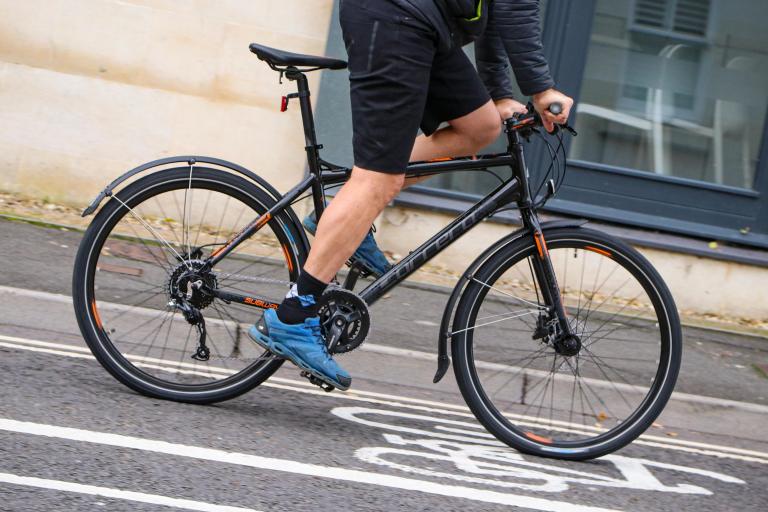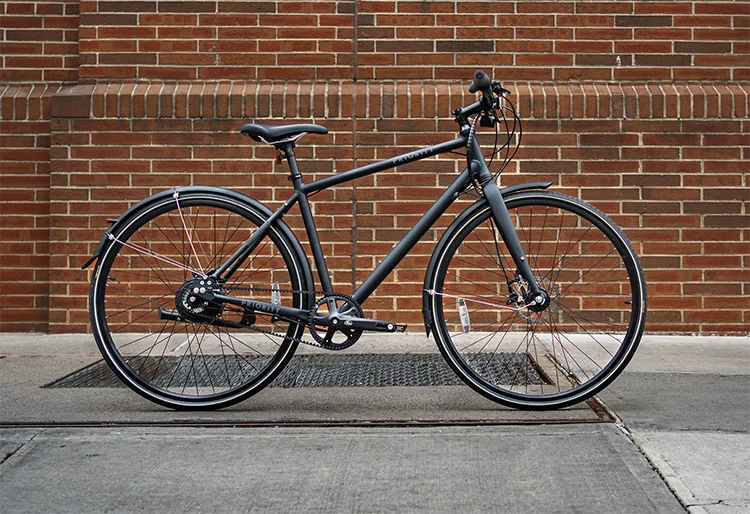Introduction: Examine Entry-Level Expectations
In the cycling world, the entry-level segment has always been the gateway for newcomers. Whether someone is looking for their first bike, an affordable commuter, or a versatile recreational ride, entry-level bikes are designed to strike a balance between cost-effectiveness and performance. Traditionally, these bikes were simple—lightweight aluminum frames, basic components, and a straightforward design aimed at getting people on the road without overwhelming them with high-end technology.
However, in recent years, entry-level bikes have undergone a noticeable transformation. With the rapid evolution of technology, rising consumer expectations, and increased competition in the cycling industry, what was once considered “basic” has now become far more sophisticated. Today’s entry-level bikes are expected to provide a lot more in terms of performance, comfort, and features—without sacrificing affordability. As a result, bike manufacturers are pushing the boundaries of what’s possible within the budget-friendly category.
The demand for better quality and more advanced features in affordable bikes has been growing, fueled by both the increasing popularity of cycling and a cultural shift toward more sustainable transportation solutions. More people are looking for bikes that can do it all: from daily commuting to weekend adventures and even light mountain biking. But this evolving expectation brings with it a question: are manufacturers truly able to meet these demands without raising prices? And how are these trends reshaping the design of entry-level bikes?
Feature Creep: Are Cheaper Bikes Getting More Complex?
One of the most noticeable trends in the entry-level bike category is the increasing complexity of bike designs. What once was a simple, no-frills ride has now evolved to include a host of features that were previously reserved for mid-range or high-end models. This phenomenon is often referred to as “feature creep,” where the inclusion of more sophisticated technology, components, and accessories becomes the norm rather than the exception.
For instance, consider the evolution of entry-level bike drivetrains. In the past, bikes in the budget category often came with basic 7-speed or 8-speed drivetrains, which were fine for casual commuting and short-distance rides. Today, it’s not uncommon to find entry-level bikes featuring 9-speed, 10-speed, or even 11-speed setups, which are designed to offer smoother shifting and a wider gear range. This shift in drivetrain technology has made its way into affordable bikes largely due to the fact that manufacturers have been able to reduce production costs while maintaining quality.
Hydraulic disc brakes, once exclusive to high-end bikes, are also creeping into entry-level models. While mechanical disc brakes still dominate the budget market, the adoption of hydraulic systems in the lower price range reflects a desire for improved performance and stopping power. These brakes offer better modulation, stronger performance in wet or muddy conditions, and less maintenance over time—qualities that previously seemed out of reach for budget-conscious buyers.
Another example of feature creep in the entry-level category is the growing presence of lightweight materials like aluminum and carbon fiber. Aluminum frames are now standard in many entry-level bikes, providing a much lighter and more responsive ride compared to the heavier steel frames of the past. Even carbon forks have become more common, as they offer better shock absorption without significantly increasing the cost of the bike. These improvements reflect a shift toward offering more value at every price point, making bikes more performance-oriented while still staying within budget-friendly limits.
The inclusion of integrated accessories like mudguards, pannier racks, and built-in lighting is another way that entry-level bikes are becoming more complex. These additions, once seen as luxury items, are increasingly available as standard features on budget bikes, further blurring the lines between entry-level and higher-end models.
Product Reviews: Value vs. Performance
With all these changes, one of the major shifts in the entry-level bike market is how value and performance are being evaluated. Previously, the primary focus of product reviews for entry-level bikes was on their affordability, with some attention paid to durability and ease of use. Today, however, consumers and reviewers alike are placing a greater emphasis on performance in addition to cost. As bikes in the budget range become more advanced, reviewers are increasingly measuring how well these bikes perform against mid-range and even high-end models.
In the past, entry-level bikes were often critiqued for their lack of performance-oriented features. Now, reviews focus on a broader range of factors—how smooth the ride is, how well the bike handles different terrains, and how comfortable it is for longer rides. In many cases, the difference between a $400 entry-level bike and a $600 model may not be just the components, but the overall experience. This shift in review focus reflects a growing expectation among consumers for bikes that can handle more diverse riding conditions.
Take, for instance, hybrid bikes, which are increasingly popular in the entry-level category. Reviewers often compare the geometry, ride quality, and versatility of these bikes, emphasizing how well they can transition between urban streets and gravel trails. Features such as tire clearance, suspension forks, and gear range are becoming important factors in reviews, as riders expect these bikes to offer an enjoyable experience in a wider variety of environments.
Another critical component of reviews is the comparison between brand reputation and product performance. As more brands enter the entry-level market, consumers are often looking for more than just the lowest price—they want to know if the brand has a history of reliability, customer service, and product longevity. Manufacturers are responding by adding warranties, improving quality control, and offering post-purchase support to ensure customer satisfaction. This shift in the way entry-level bikes are reviewed highlights how much the category has evolved.

Consumer Feedback Driving Design Tweaks
As the demand for better performance in budget bikes increases, consumer feedback has become an essential driver of design changes. Riders are no longer willing to accept mediocre gear setups, uncomfortable saddles, or poorly designed components simply because the bike is affordable. The growing community of bike enthusiasts, combined with online forums, social media, and product reviews, has given consumers a powerful platform to voice their opinions and influence bike designs.
For example, the popularity of drop bars in the entry-level gravel bike market has prompted brands to develop more affordable models with drop-bar setups, previously reserved for higher-end gravel bikes. These bikes now offer the performance and versatility that riders are craving, thanks to feedback from users who wanted the ability to tackle both road and dirt trails without needing a separate bike for each purpose.
Similarly, many entry-level bikes have adopted more ergonomic features, such as adjustable handlebars, larger tires, and wider saddles, in response to rider requests for greater comfort on longer rides. Brands are becoming more proactive in listening to what consumers want, making incremental adjustments to their designs and ensuring that their bikes are more suited to the specific needs of the riders.
The increasing role of consumer-driven design feedback means that the lines between entry-level and mid-range bikes are becoming more blurred. As manufacturers make tweaks to meet consumer expectations, budget bikes are becoming more capable and performance-oriented, while still maintaining affordability. This continuous feedback loop ensures that the entry-level segment remains relevant and responsive to the needs of a changing cycling landscape.
Conclusion: Is the Budget Segment Undergoing a Transformation?
Without a doubt, the budget bike segment is undergoing a transformation. What was once considered the realm of basic, entry-level models is now a highly competitive space, where value and performance are increasingly intertwined. Consumers expect more than just a basic bike—they want something that is versatile, comfortable, and capable of handling a variety of riding conditions.
The growing complexity of entry-level bikes, coupled with improvements in features like drivetrains, brakes, and materials, reflects a shift in both consumer expectations and industry innovation. These bikes are no longer just about getting from point A to point B—they are about enhancing the cycling experience, providing versatility, and offering riders a chance to explore new types of terrain.
As manufacturers continue to refine their designs and incorporate consumer feedback, the budget bike segment will only continue to evolve. While single-purpose bikes may not disappear entirely, they may become a niche within a broader category that is defined by versatility and performance. The future of entry-level bikes looks bright, as they become more sophisticated, capable, and tailored to the needs of modern cyclists.







































Discussion about this post